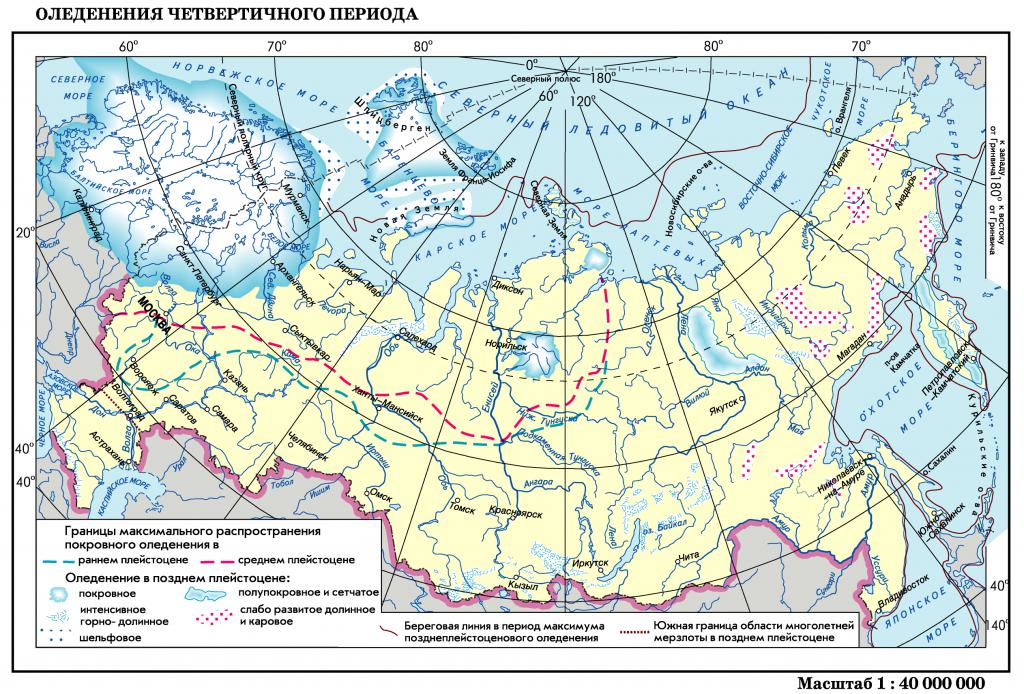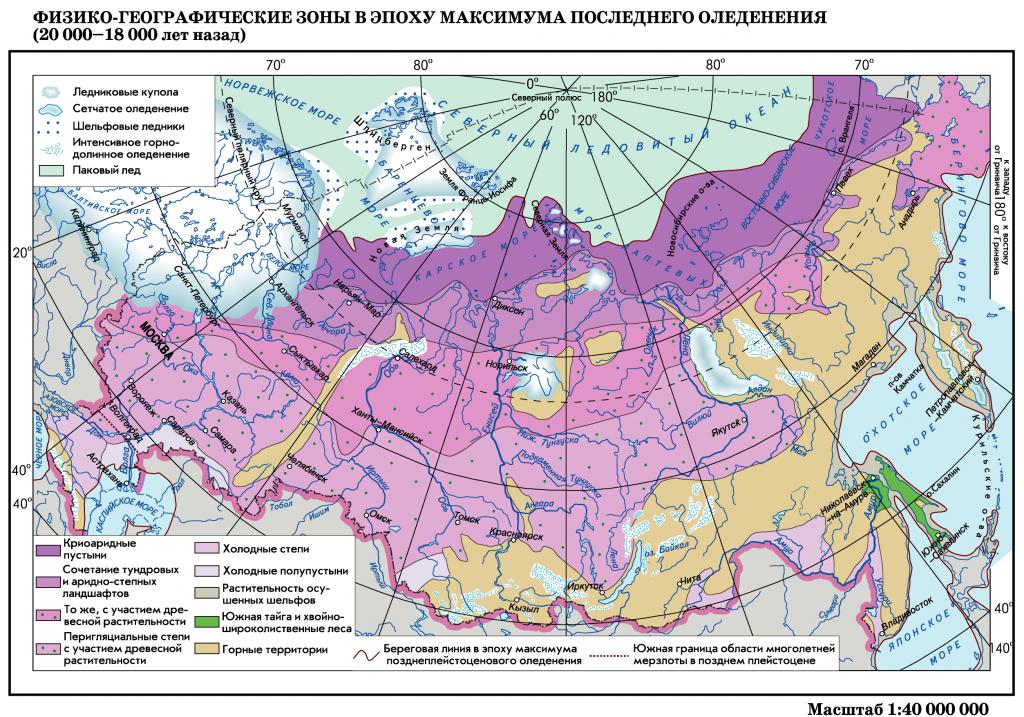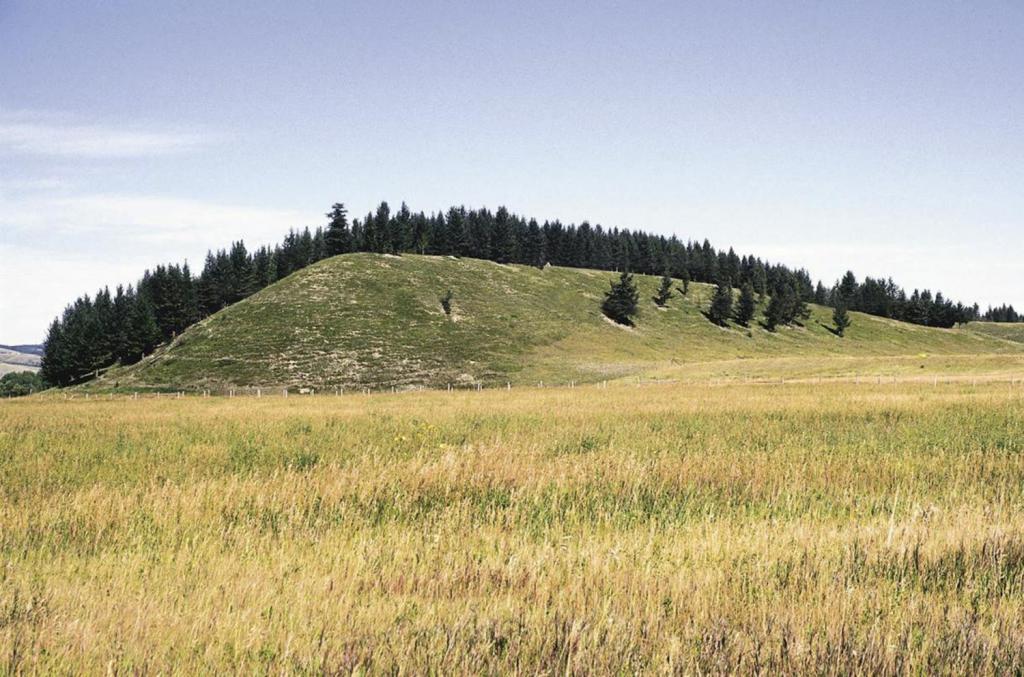The Earth's climate periodically undergoes serious changes associated with alternating large-scale cooling, accompanied by the formation of stable ice sheets on the continents, and warming. The last glacial epoch, which ended approximately 11-10 thousand years ago, for the territory of the East European Plain is called the Valdai glaciation.
Systematics and terminology of periodic cold snaps
The longest stages of general cooling in the history of our planet's climate are called cryo-eras, or ice ages lasting up to hundreds of millions of years. At present, the Cenozoic cryo-era has been going on for about 65 million years on Earth and, apparently, will continue for a very long time (judging by previous similar stages).
Throughout the eras, scientists identify ice ages, interspersed with phases of relative warming. Periods can last millions and tens of millions of years. The modern ice age is Quaternary (the name is given in accordance with the geological period) or, as is sometimes said, the Pleistocene (according to a smaller geochronological unit - the epoch). It began about 3 million years ago and, apparently, is still far from over.
In turn, ice ages are made up of shorter-term - several tens of thousands of years - ice epochs, or glaciations (sometimes the term "glacial" is used). The warm intervals between them are called interglacials, or interglacials. We now live precisely during such an interglacial era, which replaced the Valdai glaciation on the Russian Plain. Glaciations, in the presence of undoubted common features, are characterized by regional features, therefore they are named after a particular locality.
Within the epochs, stages (stadials) and interstadials are distinguished, during which the climate experiences the shortest fluctuations - pessima (cooling) and optima. The present time is characterized by the climatic optimum of the subatlantic interstadial.
Age of the Valdai glaciation and its phases
According to the chronological framework and conditions of division into stages, this glacier differs somewhat from the Wurm (Alps), Vistula (Central Europe), Wisconsin (North America) and other corresponding ice sheets. On the East European Plain, the beginning of the era that replaced the Mikulin interglacial is attributed to about 80 thousand years ago. It should be noted that the establishment of clear time boundaries is a serious difficulty - as a rule, they are blurred - therefore, the chronological boundaries of the stages fluctuate significantly.
Most researchers distinguish two stages of the Valdai glaciation: these are the Kalinin with the maximum ice about 70 thousand years ago and the Ostashkovskaya (about 20 thousand years ago). They are separated by the Bryansk interstadial - a warming that lasted approximately from 45-35 to 32-24 thousand years ago. Some scientists, however, offer a more fractional division of the era - up to seven stages. As for the retreat of the glacier, it occurred over a period of 12.5 to 10 thousand years ago.

Glacier geography and climatic conditions
The center of the last glaciation in Europe was Fennoscandia (includes the territories of Scandinavia, the Gulf of Bothnia, Finland and Karelia with the Kola Peninsula). From here, the glacier periodically grew to the south, including to the Russian Plain. It was less extensive in scope than the preceding Moscow glaciation. The boundary of the Valdai ice sheet ran in a northeasterly direction and at its maximum did not reach Smolensk, Moscow, and Kostroma. Then, on the territory of the Arkhangelsk region, the border turned sharply to the north to the White and Barents Seas.
In the center of glaciation, the thickness of the Scandinavian ice sheet reached 3 km, which is comparable to the East European Plain glacier, which had a thickness of 1-2 km. It is interesting that the Valdai glaciation was characterized by severe climatic conditions with a much less developed ice cover. The average annual temperatures during the last glacial maximum - Ostashkov - only slightly exceeded the temperatures of the era of the very powerful Moscow glaciation (-6 ° C) and were 6-7 ° C lower than modern ones.

Consequences of glaciation
The ubiquitous traces of the Valdai glaciation on the Russian Plain testify to the strong influence it had on the landscape. The glacier erased many of the irregularities left by the Moscow glaciation, and during its retreat, when a huge amount of sand, debris and other inclusions melted out of the ice mass, deposits up to 100 meters thick.
The ice cover moved not in a continuous mass, but in differentiated flows, on the sides of which heaps of detrital material formed - marginal moraines. These are, in particular, some of the ridges in the current Valdai Upland. In general, the entire plain is characterized by a hilly-morainic surface, for example, a large number of drumlins - low elongated hills.

Very clear traces of glaciation are lakes formed in hollows plowed by a glacier (Ladoga, Onega, Ilmen, Chudskoye and others). The river network of the region also acquired a modern look as a result of the impact of the ice sheet.
The Valdai glaciation changed not only the landscape, but also the composition of the flora and fauna of the Russian Plain, influenced the area of ancient human settlement - in a word, it had important and multifaceted consequences for this region.
